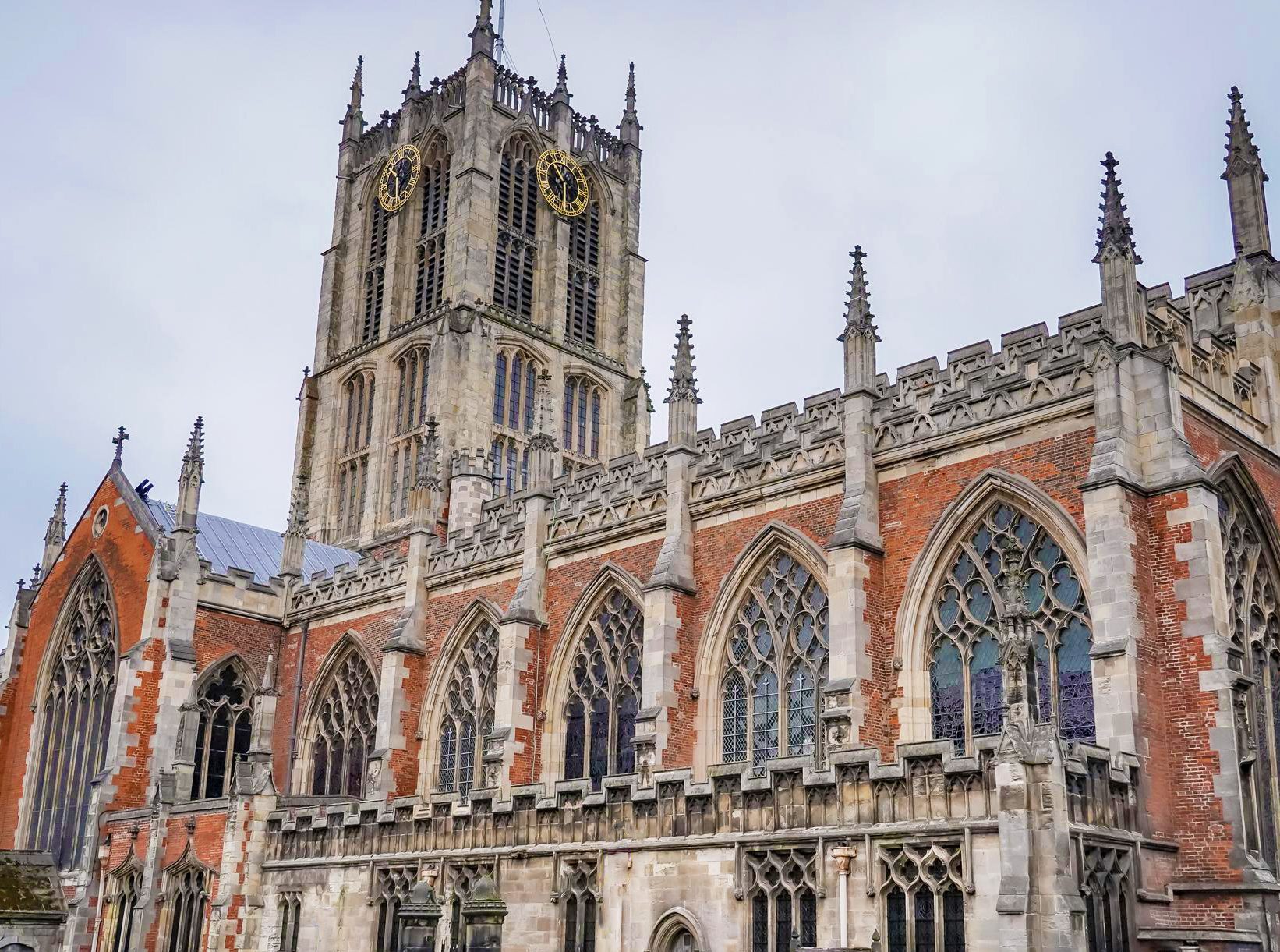Middle Ages
Hull was established at the end of the 12th century. The Meaux Abbey monks required a port where they could export the wool from their lands. They decided to construct a dock where the rivers Hull and Humber converge. Hull’s first recorded reference dates back to 1193, however its precise founding year is unknown. Wyke on Hull was the name of the area.
Hull was given permission to host markets and fairs in 1279. (Like a weekly market, but lasting for days, a fair was an annual event.) The event attracted buyers and sellers from all around the northeastern region of England. In 1285, the Holy Trinity Church was erected, and in the early 14th century, the Church of St. Mary was constructed.
The King bought Hull in 1293, and Kingston (king’s town) upon Hull was given its new name. When battling the Scots, the monarch needed a port in Northeast England through which he could resupply his troops, so the king started the expansion of Hull. He granted the town permission to host two weekly markets and a 30-day fair each year. Around 1300, the monarch also founded a mint at Hull. In the same year, he constructed an exchange where traders could trade items.
Wool was Hull’s primary export at this time. It was woven and coloured in places in what is now Belgium and Holland, where a large portion of it was exported. Along with grain and skins, some salt was also shipped. Wine was Hull’s primary import. Furs, wax, and pitch, a tar-like material manufactured from pine tree sap, were other imports, as were Scandinavian timber and iron.
Despite Hull’s reputation for shipping out bales of raw wool, the city also weaved and coloured some of the wool that it sent out of the country. In 1365, a building was constructed specifically for weighing wool bales. The production of bricks and tiles was the only other significant industry. On the outskirts of town were tile and brick factories. Blacksmiths, carpenters, coopers, bakers, brewers, and butchers were all present, as were the likes of them in every town.
Hull received a stonewall and a ditch at the beginning of the 14th century. Myton Gate was one of the four primary entrances.
Hull was affected by the Black Death of 1349, which likely killed half of the population, like all other cities. But it immediately bounced back. Hull may have had 3,500 residents by the end of the 14th century. It was a sizable and significant area by the standards of the period. Although the streets were paved, they were undoubtedly filthy and overflowing with trash and animal faeces.
A steward chosen by the king governed Hull around the beginning of the 14th century. Hull received a charter in 1331, a piece of paper that gave the locals special rights. Hull gained independence as a result. Afterwards, Hull had a mayor, rich businessman Richard De La Pole. Hull had a grammar school by the 14th century.
Friars lived in Hull throughout the Middle Ages. Instead of secluding themselves as monks do, friars ventured into the world to spread their message. In 1293, a group of religious men who called themselves Carmelite Friars, sometimes known as “white friars” because of the colour of their habits, came to the region. Whitefriargate is named after them, so they are not forgotten. There were Augustinian friars (sometimes called grey friars) in Hull beginning in 1303. Blackfriargate is so named because it was once home to a community of Dominican friars, sometimes known as “black friars” because of the colour of their robes.
Initially, Trinity House was a guild. In the Middle Ages, skilled labourers were grouped into guilds that protected the rights of their members. A guild of mariners was established, and it convened at Holy Trinity church. They operated a “hospital” (almshouse). They also had control over river traffic.
16th century
The Pilgrimage of Grace debuted in 1536. Henry VIII’s religious reforms infuriated many people, and they rebelled. The municipal council first resisted the rebels, but they soon won them over and were permitted to enter Hull. The monarch, however, managed to disperse the insurrectionists by making promises (which he broke!).
Monasteries were disbanded by Henry VIII in 1539, and a number of friaries in Hull had recently shut down, including the Carthusian Monastery. The Carthusian monks’ “hospital,” however, had been taken over by the local government.
Henry issued an order to strengthen the fortifications of the town in 1541, he constructed blockhouses or tiny forts on the other bank of the River Hull from the town. Near the North Gate, one of these could be seen. The other was located close to where the Hull and Humber rivers meet. A bigger fort, a castle, loomed between them, and there was a wall that connected the three of them. The municipal council assumed responsibility for these forts in 1552. You could take a ferry across the Hull River back in the Middle Ages, and a crossing close to the North Gate was constructed in 1541.
Tudor Hull engaged in coastal commerce in addition to international trade. Newcastle coal was transported, and some of it was “re-exported” to other regions of Britain. There was still a sizable fishing fleet, but now instead of going to Iceland, the fishermen travelled to Russia and Norway. Additionally, Hull-based ships engaged in Arctic whaling. In Hull, there has been a shipbuilding industry since the early 17th century.
17th century
Hull saw plague epidemics in the 16th and 17th centuries, much like all other places. The years 1537, 1575–76, 1602-4, and 1637 all had
epidemics. Around 10% of Hull’s population perished during the most recent epidemic, including the mayor.
The nation was heading toward civil war in 1642. The king made an effort to invade Hull in April 1642. However, Sir John Hotham, the governor of Hull, met with several lawmakers in what was known as the “plotting chamber” of his residence. He made the choice to deny the King access to Hull.
In August 1642, the monarch and parliament really started fighting. The navy supported the parliament and the town could be reinforced and supplied by sea, but the king was still determined to seize Hull. Hull remained a parliamentary outpost while the rest of the north of England was overrun by a royalist force which besieged Hull in July. The royalists, however, were defeated by the defenders by the month’s conclusion. Finally, the siege ended.
Hull saw a commerce boom in the late 17th century. Grain and wool exports as well as imports from Scandinavia both grew significantly. Additionally, shipbuilding saw a boom.
Celia Fiennes, a travel writer from the late 17th century, had this to say about Hull: “the buildings of Hull are exceedingly clean with nice streets.” The vast river Humber, which rises and falls with the tides, makes the city a convenient commerce hub. Crossing two drawbridges and gates, we made our way into Hull from the south. Trinity House is a hospital within the town that provides care to widows of sailors. Hull also boasts a huge and reputable church.
The defences around Hull were upgraded in the late 17th century. A castle has stood on the east bank of the Humber since the 16th century, with two forts or blockhouses to its north and south. Both the main castle and its southern blockhouse were renovated. The citadel and the southern fort were incorporated into a new triangular fort.





